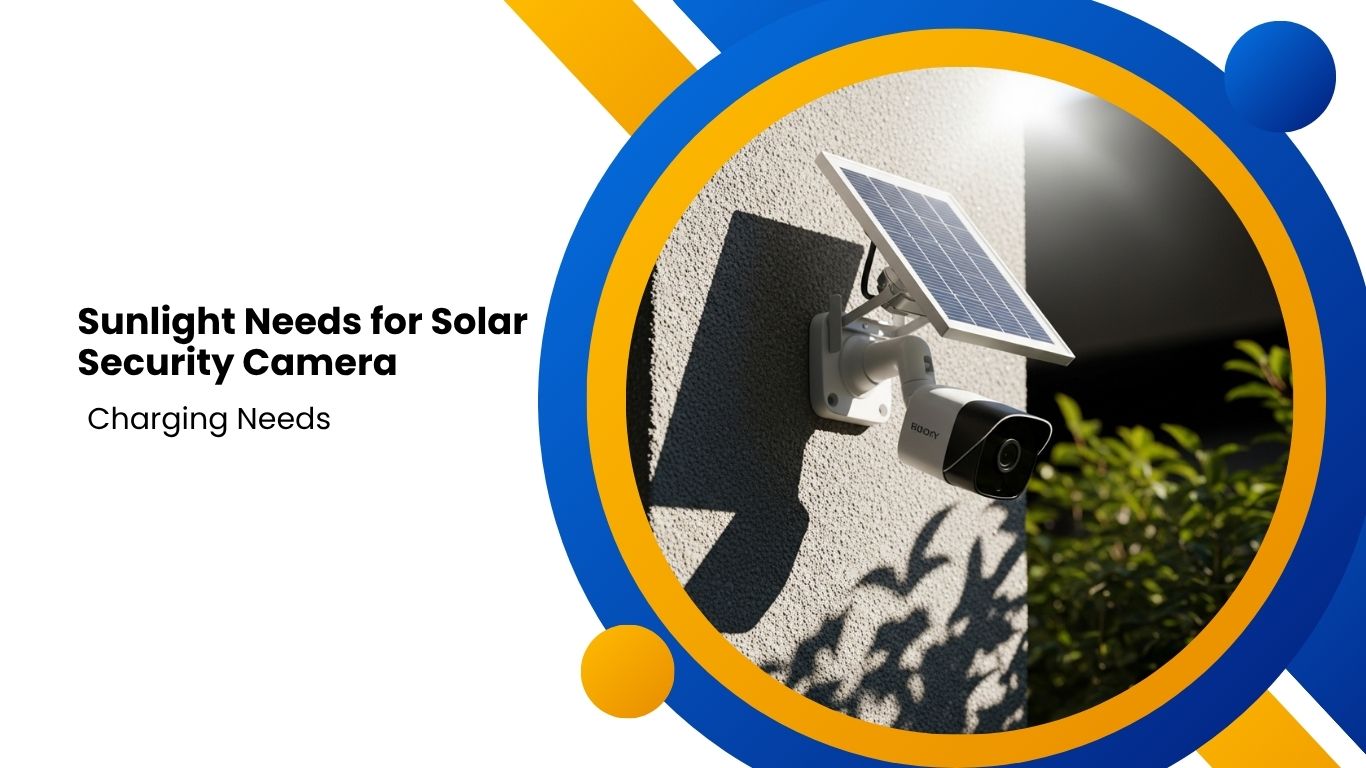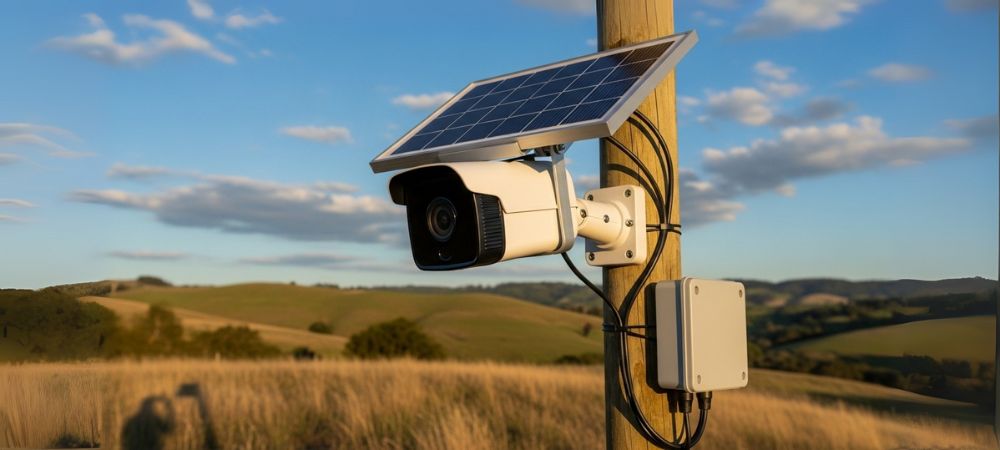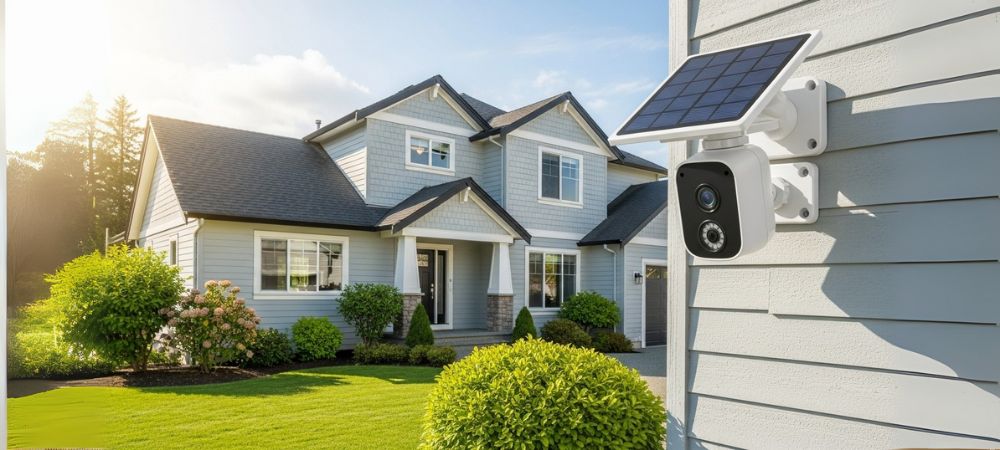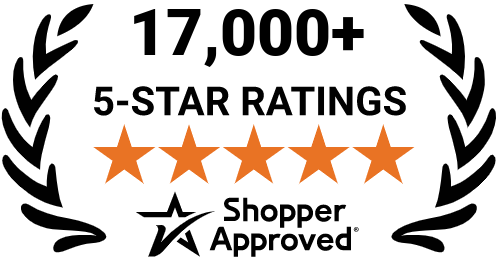How Much Sunlight Does an Outdoor Solar Security Camera Need?

Summary:
- Outdoor solar security cameras need 4–6 hours of direct sunlight daily for reliable operation.
- Sunlight needs depend on camera power usage, panel efficiency, battery capacity, and location.
- Proper installation and regular maintenance maximize charging and performance.
- Zetronix solar cameras are built for high efficiency, offering dependable protection even in low-light environments.
Imagine investing in a sleek, solar-powered security camera only to find it cannot stay charged overnight. This is a common frustration for many users. If you’re asking, how much sunlight does an outdoor solar security camera need to work reliably, you are not alone. As more homeowners adopt eco-friendly, wire-free surveillance systems, understanding the exact sunlight requirements becomes essential for consistent performance.
Most solar outdoor camera require at least 4 to 6 hours of direct sunlight per day to maintain a full charge and operate reliably. This guide explains how solar security cameras function, why direct sunlight impacts their battery life and recording reliability, and how to ensure proper installation. By the end, you’ll know how to prevent common issues like battery drain, footage loss, and poor system uptime, so your investment performs as expected.
How do solar cameras work?

Solar-powered security cameras use photovoltaic panels to convert sunlight into electrical energy. This energy powers the camera in real time and recharges its internal battery for later use. Most models require between 2 to 8 hours of direct sunlight solar camera need per day. It depends on panel efficiency and battery capacity. On average, a full charge takes 5 to 8 hours of optimal sunlight, though high-efficiency models may need less time.
Energy storage relies on rechargeable lithium batteries, which allow the camera to operate during nighttime or cloudy weather. When sunlight is unavailable, the camera automatically draws power from the battery. A higher battery capacity allows the camera to function for multiple days without sunlight, ensuring uninterrupted performance. This combination of solar panel input and battery backup provides reliable 24/7 security, even during overcast conditions or brief sunless periods.
Key sunlight factors for solar cameras
- Camera power affects energy demand: Solar camera power consumption directly determines how much sunlight is needed for daily recharging. Most outdoor solar security cameras use between 2 to 5 watts during operation. It depends on their features like high-definition video, 24/7 recording, motion tracking, and night vision increase energy usage.
- Panel efficiency determines charging speed: Solar panel efficiency controls how effectively sunlight is converted into usable energy in solar cameras. Most camera panels offer 3 to 8 watts of output. High-efficiency monocrystalline panels convert up to 22% of sunlight, while lower-end polycrystalline options convert less.
- Battery capacity influences backup duration: Battery size of solar cameras impacts how long a camera can operate without sunlight. Most outdoor solar cameras use lithium-ion batteries ranging from 4,000mAh to 13,000mAh. Fully charged batteries power the camera for 2 to 7 days.
- Location impacts sunlight availability: Geographic and environmental factors affect how much sunlight reaches the solar panel. Cameras placed in higher latitudes receive less sunlight in winter. Clouds, rain, and snow can reduce the 90% solar output of solar security cameras.
Sunlight needs for outdoor solar cameras
The table below summarizes the minimum daily sunlight requirements and typical battery backup durations for popular Zetronix solar-powered security cameras.
These estimates are based on official Zetronix product documentation and user guides, providing realistic expectations for performance across different environments.
Camera Model | Minimum Sunlight Needed (hours/day) | Battery Backup (days on full charge) | Notes |
< 1 | 180 | Highly efficient; suitable for low-sunlight environments | |
< 0.5 | 360 | Integrated floodlight; operates with minimal sunlight | |
— | 180 | Designed for autonomy and remote 4G LTE connectivity | |
< 1 | Up to 365 | Dual-lens system; supports full pan/tilt with long standby |
What are the Installation tips to maximize sunlight?
To ensure reliable performance and uninterrupted power supply, solar security cameras must receive maximum sunlight exposure. This outdoor surveillance guide emphasizes the importance of proper installation and regular maintenance of solar panels.
6 key installation tips to maximize sunlight for a solar security camera system.
- Face the solar panel towards the sun (true south in the Northern Hemisphere, true north in the Southern Hemisphere).
- Adjust the tilt angle of the panel to roughly equal your location’s latitude for year-round optimization.
- Install the solar panel separately from the camera to place it in the sunniest spot.
- Avoid installing panels near objects that cause shade, as even 10% shading can reduce efficiency by 30-75%.
- Clean the solar panel regularly with a soft cloth and mild water solution to remove dust, pollen, and bird droppings..
- Monitor battery health and replace batteries every 1-3 years as recommended for consistent performance.
What happens if your solar camera lacks sunlight?

Solar security cameras rely on daily sunlight to maintain power and performance. When sunlight is limited due to shade, weather, or poor placement, battery levels drop, and the system may fail to record or send alerts reliably.
4 signs your solar camera isn’t getting enough sunlight:
- The solar camera shuts off overnight or misses footage.
- Battery stays low or never fully charges.
- Live view and notifications become unreliable.
- Frequent system errors or streaming lags.
4 backup solutions for low-sunlight conditions:
- Provide extra power during cloudy days.
- Use an AC adapter to recharge directly from an outlet.
- Install the solar panel in a sunnier location.
- Boost energy input in shaded or low-light areas.
Conclusion
Outdoor solar security cameras are a reliable and eco-friendly solution—when they receive enough daily sunlight. Most models need 4–6 hours of direct sunlight to stay fully charged and function properly. By understanding factors like panel efficiency, battery capacity, and environmental placement, you can avoid common issues like battery drain or missed footage.
To ensure 24/7 protection in any lighting condition, choose high-efficiency models like those from Zetronix, designed for maximum performance with minimal sunlight. Explore Zetronix’s solar camera range today for smarter, low-maintenance home security that works rain or shine.
FAQs
How much sunlight does a solar camera need daily?
Most solar cameras need about 4–6 hours of direct sunlight each day to stay fully charged and perform at their best. Getting that sunlight ensures your camera stays active, records footage, and sends alerts around the clock.
Can solar security cameras work on cloudy days?
Absolutely! Solar cameras store energy in built-in batteries, so they continue working during cloudy weather or even at night. Just keep in mind that extended cloudy periods may slow charging and reduce battery life.
What if my camera doesn’t get enough sunlight?
If your camera isn’t getting enough sun, you might notice it shuts off early, misses events, or has laggy video. A quick fix could be moving the solar panel to a sunnier spot or adding a backup power source like an external battery.
Do I need to clean the solar panel?
Yes! A dirty panel blocks sunlight, just like a dirty window blocks your view. Wipe it down regularly with a soft cloth and mild water to keep charging levels high and performance consistent.
Can I add another solar panel for more power?
Definitely. Adding a second panel or upgrading to a higher-wattage one is a great way to boost charging, especially in shaded areas or during winter months. It's a smart move for long-term reliability.




